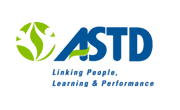 |
|
![]()
About ExpertC+Charge Prognose
Speaker Search
Latest Issue
Article Archive
Training & Meeting Resources
Subscriptions
Experts Only
(Alexandria, VA) July 31 - E-learning, a rapidly growing form of instruction
enabled by the Internet, will not realize its full potential if it is used only to deliver courses, warned a panelof advisers meeting recently at ASTD. The ASTD E-Learning Brain Trust, a panel of industry experts and analysts, cautioned that many companies mistakenly think of e-learning only
as an electronic replacement for classroom instruction.
Its real potential, which they characterized as revolutionary, lies in
second-generation software applications that are just emerging. These include learning content management systems, simulations built on game theory, and knowledge management and collaboration tools that support tacit learning among groups of people. "Learning content management systems are promising because they permit organizations to provide learning that isbroadly distributed but personalized for the task at hand and the for an individual user's
needs and preferences," said Pat Galagan, Brain Trust coordinator and editor-in-chief of ASTD's magazines.
LCMS technology tags and distributes chunks of knowledge as needed for
specific tasks. Such systems, which are designed to nest with other enterprise-wide software, take an important step beyond today's knowledge and learning management systems. "They bring content and context together and match the learning agenda to the business agenda. This elevates all forms of learning, including e-learning, from an operational activity to astrategic one," said Marc Rosenberg, Brain Trust member and Principal at DiamondCluster International in New York, NY.
Simulations, already used for training by the U.S. military and the aviation
industry, are on the verge of becoming viable for corporate professional skills. Brain trust member and Chief Technology Officer of SimuLearn, Clark Aldrich, expects that simulations will be widespread learning tools in business within three years. They are also expected to make e-learning attractive to a generation of employees raised on computer games. This is significant, the experts noted, because there has been resistance to e-learning among employees raisedon classroom learning.
Collaboration tools, comprising software that captures the exchange of
knowledge that occurs as people work together, take e-learning a major step beyond online courseware. "Although learning sometimes occurs through courses, it more often occurs by bringing people together, independent of a course, to share insights and experiences. Technologyhas allowed us to make this happen easily and economically, and as a result, powerful learning is occurring in online communities," said Diane Hessan, Brain Trust member and CEO of Communispace Corporation in Watertown, MA.
The group pointed to warning signs that organizations jump onto the
e-learning bandwagon because the technology saves money and time formerly spent on classroom training courses, but they miss the real gains in performance that come when a company moves beyond the "training as courseware" mentality.The ASTD Brain Trust made these recommendations to companies about the use
of e-learning:- Have a clear learning strategy and
implementation plan that links
learning
and integration costs as well as maintaining the ability to upgrade.
courses without the means to manage their use for strategic goals.
Select e-learning software that supports industry standards from such groups
as theIMS Global Learning Consortium and SCORM (for meta data tagging to ensure interoperability of content), IEEE (for interoperability of technology), ASTD's e-Learning Courseware Certification (for instructional design and usability), and The Accessibility
Board (for accessibility).
E-learning will not be successful or reach its full potential unless
companies match their learning agenda to their business agenda, the group cautioned. "Organizations have two challenges on their hands: The first is to find ways to use technology more effectively to connect learners to the learning, and the second is to connect the learning objectives tothe business goals of the company," said Brain Trust member Dave Egan, Vice President
of Business Development and Partner Strategy of THINQ Learning Solutions, Inc. in
Billerica, MA. "It's amazing what kind of powerful learning and success will follow when organizations meet both challenges.
